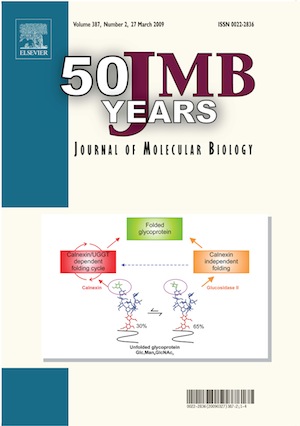Ask for a reprint
email :
* Give your email
2009
ACL
|
M.Mackeen, A.Almond, M.Deschamps, I.Cumpstey, A.Fairbanks, C.Tsang, P.Rudd, T.Butters, R.Dwek, M.Wormald, 'The conformational properties of the Glc3Man unit suggest conformational biasing in the chaperone assisted glycoprotein folding pathway', J. Mol. Biol. 387 335-347 (2009) doi:10.1016/j.jmb.2009.01.043
A major puzzle is: are all glycoproteins routed through the ER calnexin pathway whether or not this is required for their correct folding? Calnexin recognizes the terminal Glc1-3Man linkage, formed by trimming of the Glc1-2Glc1-3Glc1-3Man (Glc3Man) unit in Glc3Man9GlcNAc2. Different conformations of this unit have been previously reported. We have addressed this problem by studying the conformation of a series of N-glycans, i.e. Glc3ManOMe, Glc3Man4,5,7GlcNAc2 and Glc1Man9GlcNAc2 using 2D NMR NOESY, ROESY, T-ROESY and residual dipolar coupling experiments in a range of solvents, along with solution molecular dynamics simulations of Glc3ManOMe. Our results show a single conformation for the Glc1-2Glc and Glc1-3Glc linkages, and a major (65%) and a minor (30%) conformer for the Glc1-3Man linkage In contrast, there is a major (65%) and minor (30%) conformation for the Glc1-3Man linkage. Modeling of the binding of Glc1Man9GlcNAc2 to calnexin suggests that it is the minor conformer that is recognized by calnexin. This may provide one of the mechanisms for controlling the rate of recruitment of proteins into the calnexin/calreticulin chaperone system and enabling proteins that do not require such assistance for folding to bypass the system. This is the first time evidence has been presented on glycoprotein folding that suggests the process maybe be optimized to balance the chaperone assisted and chaperone independent pathways.
|

|